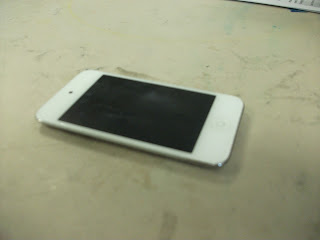Friday 30 November 2012
Friday 23 November 2012
Friday 16 November 2012
Monday 5 November 2012
Part 2

This portrait photograph was taken by photographer Annie Leibovitz. In comparison to Yousuf Karsh's portrait photography, there is a clear difference. The modern day versions of portraits have more colour and qualities. For instance, this portrait of the Queen isn't as simplistic. It has big scenery behind the main focus (the person) and shows more than just the person's face. Also, rather than the Queen looking directly into the camera she is looking away in the other direction. This takes away the idea of a portrait showing expression in the eyes.
PHOTOJOURNALISM
"A picture is worth a thousand words" - Napoleon Bonaparte.
Photojournalism creates images in order in which tells a news story. As the news is evolving all the time, technology has also evolved greatly. For example, in 1990- when Iraq invaded Kuwait - a picture took 40 minutes to send to a newsroom. Nowadays, sending a picture from any location would take 2 minutes. This shows just how much technology has developed.
Photojournalism is used in newspapers and on websites to show a story through image.
This photo was taken by an award winning photographer called Carol Guzy. The photo was taken in 2006. This is a very good example of photojournalism because it shows emotion and gives an idea of the story. By keeping the photo in black and white, it makes it look much more suited for the story and is also more 'dramatic'.
This photo was taken by photographer Nick Ut in 1972. It shows the horrific emotions in the children's faces and you can see the surroundings are poor.
LANDSCAPE
Landscape photography shows different spaces within the world. The subjects in the photos are often strongly defined landforms, weather, and ambient light. For the photographer to capture detail, they use a wide/long shot.
Landscape photography is a form of art.
This photograph was taken by Annie Griffiths-belt. The bursting sun in the corner of the photograph creates the colourful reflection in the water. The water/lake is directly in the center of the photograph which makes it look really nice because of the bright colour formed around it as well as being reflected on it.
This landscape photo was taken by Ansel Adams during 19??. The black and white contrast makes the photograph look more mysterious as the cloud are reflected in the water. The angel of the photo makes the scenery look longer in the distance as the trees are going inwards towards the middle where there are mountains.
MACRO
Macro photography is typically used in nature shots. These shots are mainly of insects and plants where great detail is required (small objects). There is a significant difference between macro and close-up photography; macro shows much finer detail as well as detail that would not usually be seen. For example, the hairs on an insect or the pattern in your eye.
This photo was taken by photographer Nigel Kiteley. This is a very good example of what a macro photograph really is. On the butterfly you can see every little detail that our eyes wouldn't normally see by themselves. Even on the flower you can see the texture crystal clear and the colours are bright.
This photo was taken by photographer Nigel Kiteley. This is a very good example of what a macro photograph really is. On the butterfly you can see every little detail that our eyes wouldn't normally see by themselves. Even on the flower you can see the texture crystal clear and the colours are bright.
Subscribe to:
Posts (Atom)














